Still Images In Great Advertising, is a column where Suzanne Sease discovers great advertising images and then speaks with the photographers about it.
The theme for the next couple of posts for this column is winners in the 2012 Communication Arts Photography issue. If you promote yourself wisely in there, it can have great results for your career. I was pleased to see John Huet and the work he did for Playtex and Mazda as winners in this years book. I had the pleasure of hiring John on a campaign for Wrangler Jeans and we were extremely pleased with the results. And I think that is why John has had a long respected career.
Suzanne: John, you have been a consistent photographer and you continue to challenge yourself in how you shoot. What is your secret to take risks while striking that balance on staying true to yourself?
John: There are no secrets, just common sense. A look or style can get you a lot of work or awards, but the industry is always hungry for something new. A good photographer is always evolving. You need to evolve and grow, not conform or adapt. If you are following a trend, you will always be doing that, following. There are constantly new techniques and equipment being developed that open doors in the medium. The key is to try new things, but see where your work fits into those techniques. If it doesn’t fit, move on. If you try to make it fit, it will feel forced, and your work will suffer. If you can find a path in a certain technique to accent your own style that is still unique to you, then your work is evolving.
Suzanne: You have so many repeat clients. In an industry that has no loyalty, what is your secret?
John: The best people to ask would be the people who hire me. Most people will tell you it’s a matter of personal chemistry or a social connection. These things are important, but they are not the number one factor. By thinking these are the most important aspects of getting hired, you create an excuse for yourself when you don’t get hired. It is easier to say. “that person has a personal relationship with the client,” or “that person doesn’t like my work” rather than saying, “My work wasn’t right for the job.”
Loyalty is really the wrong way to look at it. Things are always changing. Clients, brands, agencies, looks, creative directors, everything is always in flux. Clients are going to go with what’s right for their project. If they move on to another photographer, it doesn’t mean they’re not loyal. The bottom line is – produce good work, build good relationships, and don’t be a dick.
Suzanne: I remember when we were considering you for the Wrangler project, it was your personal work that sealed the deal. What are your thoughts about the importance of showing personal work?
John: There is no line between professional and personal work for me. I just shoot with the focus of mastering my craft and progressing my style. Doesn’t matter if I am shooting with my iPhone or shooting my niece’s Promenade, I approach the work as an opportunity to practice and learn something. I think the biggest advantage of “personal work,” is to utilize the time explore and perfect new techniques. The end result might be a body of images that you can use to show a side of your work that clients may not have known you for, thus opening up more opportunities.
Suzanne: I remember when working with you, you were so pleasant. I think that is a huge part of your long career and success, do you agree?
John: Yes, no one wants to work with someone who is a difficult, especially now. There are a lot of great photographers out there, and if you are difficult to work with, the client may find it’s just easier for them to find someone new. Clients have a hundred different problems to worry about, you don’t want to be one of them. That doesn’t mean that you don’t have an opinion or that you don’t contribute to the creative dialogue. It just means that you keep the bigger picture in perspective.
Suzanne: You have a very successful career. What would you tell a young photographer just starting out today about relationships, professionalism, vision and what would you have maybe done differently?
John: I wouldn’t have done anything differently. It’s easy to say, if I did X, I could have gotten this job or been considered for that gig. Every pitfall and shortcoming that I’ve experienced has shaped my work and my career into what it is today. I am thankful for that, not regretful.
As for advice. What gets lost these days is that what we do is a craft. As a craftsman, you can’t look at what you do as work. You have to look at what you do as an extension of who you are. Thus, your work is a part of you. So you have to be proud of what you do and do it because it is an expression of who you are, not because it’s something you’ve seen someone else do or it’s something that you think will be the next big trend.
Put as much time and effort into your work as you can. Then do more. It’s common with digital photography for people to say “anyone can be a photographer.” This is true. Anyone can go out, buy a camera, take a picture and be a photographer. Just like anyone can go out buy a football, throw the football and be considered a quarterback. It’s the person who dedicates the time and effort into throwing that football accurately, constantly, and uniformly that becomes the professional rather then the weekend warrior who plays pickup games at the park.
Note: Content for Still Images In Great Advertising is found. Submissions are not accepted.
On the court, in the rink, on the links or in the water, John captures the intensity of both athletic performance and the intimate athletic portrait with ease. Dedicated to his craft, John is inexhaustible in his drive to reveal his subject in an unexpected manner. From his published work including Soul of the Game, Images and Voices of Street Basketball, and The Fire Within, the official commemorative book of the 2002 Olympic Games, to his commercial photography campaigns for the world’s most noted athletic brands and sports-related products, John has captured the indomitable spirit of athleticism at all levels. Unsurprisingly his twenty-plus year, award-winning career extends far beyond sports. At ease with his subjects, a rapport is established, defenses diminish and time constraints have little impact. John reveals his subject, and his photography showcases the essence, emotional intensity and dignity of simply being human.
He lives with his wife and two children in Manchester, MA and is represented by Marilyn Cadenbach.
APE contributor Suzanne Sease currently works as a consultant for photographers and illustrators around the world. She has been involved in the photography and illustration industry since the mid 80s, after founding the art buying department at The Martin Agency then working for Kaplan-Thaler, Capital One, Best Buy and numerous smaller agencies and companies. She has a new Twitter fed with helpful marketing information. Follow her@SuzanneSease.


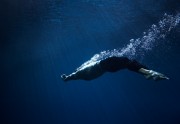
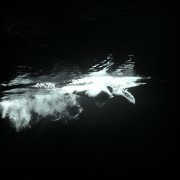


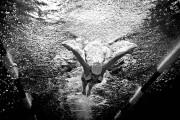

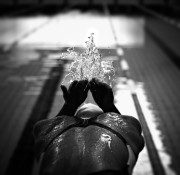
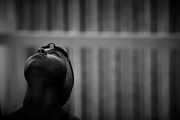
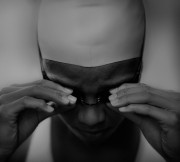
5 Comments
Great read.
“The bottom line is – produce good work, build good relationships, and don’t be a dick.”
[…] some wonderful advice for the aspiring and the professional photographer alike. Read the article at this link. This entry was posted in Uncategorized and tagged John Huet, people, photographer, sports. […]
Love these images, thanks for sharing!
[…] recognition in the 2012 Communication Arts Photography issue, caught the eye of Suzanne Sease, of A Photo Editor. Suzanne sat down with John to discuss the keys to surviving the every changing, and ever demanding […]
“You’re over 30 and you’re still assisting?”
– John Huet to me and another assistant a few years ago.
Comments are closed for this article!